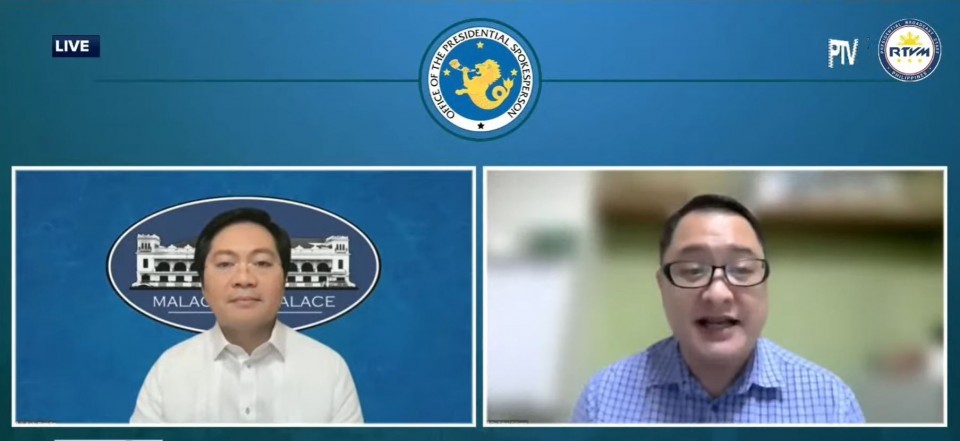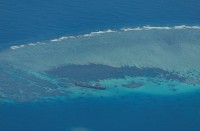Green, Yellow, Red risk classification of countries dropped effective today, Feb. 1, as int’l leisure travel to PHL allowed

(Eagle News) – The Philippine government explained that its decision to allow fully vaccnayed international leisure travelers to come into the country and not undergo facility-based quarantine anymore is based on scientific data and had been studied carefully.
Starting today, Tuesday, February 1, the Green, Yellow and Red risk classification for countries based on their Covid-19 situation on these territories would no longer be implemented.
On February 10, fully vaccinated international travelers could already enter the country if they have negative RT-PCR test results within 48 hours or two days of departure from their country of origin.
Filipino travelers from abroad could also enter the country even if they have a positive Covid test within 48 hours of departure from their origin country, but only if they present a medical certificate that they have recently recovered from Covid-19 and are no longer infectious.
Health experts consulted by the Philippines’ Inter-Agency Task Force (IATF) on Emerging Infectious Diseases vouch for the soundness of this decision.
“So, these decisions, very careful naman tayo and we also vet with the all-experts groups, very, very important, we have these open discussions. And hindi lang naman tayo iyong bansa na gumagawa nito. Actually, tiningnan na rin natin iyong UK, iyong Denmark nagbababa and we always watch what they are doing,” explained Dr. Edsel Salvana, from the Philippines Technical Advisory Group on Infectious Diseases.
-Well-studied, “quite cautious” decision–
Salvana, who is also the Director of the Institute of Molecular Biology and Biotechnology and of the UP – National Institutes of Health, said that the other members of the Advisory Group, Dr. Marissa Alejandria and Dr. Anna Ong-Lim, have also agreed on the easing of restrictions. He said they were “actually quite cautious” on this.
“We are only doing this for vaccinated travelers, not for unvaccinated because we know that the unvaccinated travelers have higher viral loads and more likely to generate variants of concern,” he said.
He also cited data on the speed of declining Covid-19 cases. While new cases rose steeply at the start of the year, or even before that, the cases also dropped just as fast, including the hospital admission, he said.
-Taking a little risk-
Salvana said that this means the country could “take a little of risk” especially as most other countries even have lower community transmission than the Philippines.
“Kasi nakikita naman natin ngayon nag-record cases tayo pero iyong hospitals, while umakyat ng kaunti iyong admissions, very fast na it started to go down also. So, what that tells us is we can take a little bit of risk in terms of having these passengers come in especially from countries na who have the same or even lower community transmissions than us,” he said.
“Iyong risk pa nga nila kapag nagka-quarantine sila, is actually lower na makahawa ng ibang tao over na naglalakad sila outside,” he observed.
-Denmark case-
Denmark on Tuesday, February 1, became the first European Union country to lift all of its Covid restrictions despite record numbers of cases, relying on its high vaccination rate to cope with the milder Omicron variant.
After a first attempt at lifting all its restrictions between September and November, the Scandinavian country is once again ditching its facemasks, Covid passes and limited opening hours for bars and restaurants.
More than 60 percent of Danes have also received a third dose — one month ahead of health authorities’ schedule — compared to an EU average of just under 45 percent.
Malacanang also cites the country’s high level of vaccination and low hospitalization rates as reason for easing of restrictions, including placing the capital region of Metro Manila under a less restrictive Alert Level 2.
As of January 30, the Philippines has already fully vaccinated more than 58.7 million Filipinos.
Health Undersecretary Maria Rosario Vergeire also noted that the local transmission of virus cases in the country was actually higher than other countries, so, she said, easing the travel ban was just reasonable.
“Ang sinasabi ng ating mga eksperto, it doesn’t make sense anymore because iyon pong transmisyon dito sa ating bansa ay napakataas na – baka mas mataas pa doon sa mga pinagbabawalan natin na mga travellers coming from other countries,” she said in an earlier Palace briefing.
-No “forward transmission” of virus from ROFs-
She also cited phylogenetic analysis that there was no “forward transmission” of virus cases from returning overseas Filipinos.
“Ibig sabihin ng ‘forward transmission’, hindi po nanggaling sa karamihan ng ating returning overseas Filipinos ang mga pagka-community transmission natin sa ating komunidad. Dahil nakikita po natin katulad noong naipresenta natin, BA.1 mostly are returning overseas Filipinos at iyong sublineage ng BA.2 ang predominant sa ating local cases,” she explained.

Palace spokesperson Cabinet Secretary Karlo Nograles also emphasized that the technical experts consulted by the IATF experts and specialists in their fields.
“Gusto lang po naming i-emphasize na ang ating mga Technical Experts are composed of well-known doctors, epidemiologist, mga espesyalista at ito po iyong ginagawa nila araw-araw. Bago pa man dumating itong Coronavirus sa bansa ay ito na po iyong kanilang expertise,” he said.
The Department of Health had earlier announced that the Omicron variant sublineage BA.2 or the so-called “stealth Omicron” is the dominant Covid-19 variant in the country. It said that returning overseas Filipinos (ROFs) who tested Covid positive mostly had the original Omicron sublineage BA.1.
(Eagle News Service)







